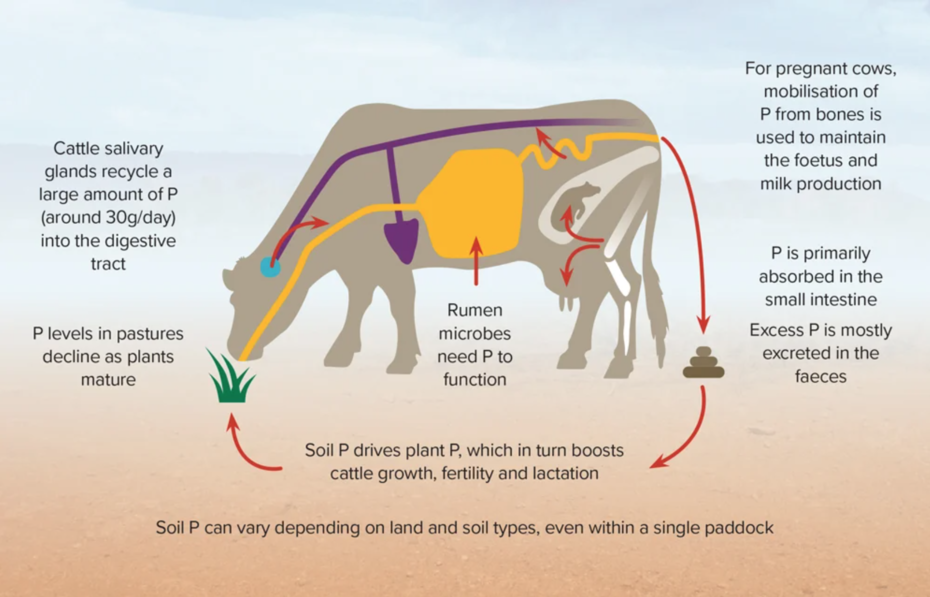Posted March 4, 2022
We are in the midst of an excellent pasture growing season, a welcome reprieve after the droughts and fires that Australia has experienced in recent years.
While there is plenty of feed in the paddock, your herd and pasture still need careful attention to get the best performance out of both. Nutritional supplements and grazing management are key to the energy efficiency of your cattle.
Nutrition is critical to the function of any livestock enterprise – without consistent, high quality nutrition animals cannot reach their genetic potential. Rapidly growing lush grass is often high in moisture and protein, but lacking energy and some important minerals. Animals on ‘green feed’ can be left with imbalances in their nutritional requirements.
Molasses supplements, pasture-assisted grain feeding and mineral drylicks can resolve nutritional imbalances, ensuring that the animal’s requirements are met regardless of the pasture they have access to.
Reproductive Health
Many cattle producers are focussing on rebuilding their breeding herds now that conditions have improved. Higher weaning weights, joining weights and improved conception rates are a focus while pasture is abundant. Heifers that are close to joining weight can benefit from a supplementary feed, which can fill gaps in pasture quality, prompt growth, and improve conception rates. Healthy heifers mean healthy calves, which is the end goal for all breeding herds.
Nutritional setbacks in heifers, particularly post-weaning, will reduce the chances of the animal reaching the Critical Mating Weight (CMW = approx. 340kg) required to trigger puberty. Research has confirmed that the CMW is required to achieve high pregnancy rates, and is determined primarily by breed type. In Bos Taurus (Angus, Hereford, Limousin) cows, the CMW is ~60% of the mature animal’s live weight. In Bos Indicus (Brahman, Zebu, Gyr) cows, the CMW is ~70% of the mature animal’s live weight.
Mineral Deficits
Australia’s arid climate means that many regions lack macro and trace minerals year round, and supplementation is necessary regardless of pasture volume. Phosphorus and magnesium are commonly lacking in Australian pastures, causing a range of health issues for cattle deprived of these minerals. Magnesium deficiency causes hypomagnesaemia or ‘Grass Tetany’. Phosphorus deficiency results in reduced dry matter intake, reduced milk production and lower conception rates, among many other symptoms.
These nutritional deficits can then impact fertility, resulting in lower conception and calving rates. Although your grass may look green, this doesn’t guarantee that your cattle are meeting their mineral requirements – which is where supplementation can help balance the diet and maintain animal health.
Grazing Management
Grazing cattle should be converting as much pasture as possible into production, without impairing the regrowth ability of the feed. Feed budgeting helps to avoid the over or undergrazing of pastures and optimises pasture conversion to energy and weight gain. MLA’s Feed Demand Calculator is useful in your decision-making around grazing and stocking rates.
Without feed budgeting producers may risk missing production and profit opportunities. Overgrazing reduces plant leaf area and energy content in the feed, which in turn reduces production of the animal. Undergrazing reduces pasture quality by allowing the plant to mature, become more lignified, and less digestible.
Feed budgeting and rotational or cell grazing enables producers to make informed decisions about how pasture is utilised. They can then graze pasture at its optimal growth phase and rest it to promote good regrowth of the plant. Excess pasture can be made into hay or silage when the nutrients are at the highest level, conserving fodder for later when pasture won’t be as abundant.
To avoid the losses created by mineral and energy deficits in pasture, producers can readily supplement their cattle with an appropriate paddock assisted ration. Pasture is utilised in the most efficient way, which results in higher energy conversions, healthier animals, and more profitable operation of your enterprise.
Amy is a nutritionist at Riverina Australia and has a Bachelor’s degree in Science, specialising in Animal Science and Animal Health.
References
Micke, G., Sullivan, T., Soares Magalhaes, R., Rolls, P., Norman, S. and Perry, V., 2010. Heifer nutrition during early- and mid-pregnancy alters fetal growth trajectory and birth weight. Animal Reproduction Science, 117(1-2), pp.1-10.
MLA Corporate. 2022. Pasture finishing | Meat & Livestock Australia. [online] Available at: https://www.mla.com.au/research-and-development/livestock-production/livestock-nutrition/pasture-finishing/
MLA Corporate. 2022. Pasture utilisation | Meat & Livestock Australia. [online] Available at: https://www.mla.com.au/extension-training-and-tools/feedbase-hub/persistent-pastures/grazing-management/pasture-utilisation/
MLA Corporate. 2022. Phosphorus | Meat & Livestock Australia. [online] Available at: https://www.mla.com.au/research-and-development/livestock-production/livestock-nutrition/phosphorus/
MLA Corporate. 2022. Supplementary feeding | Meat & Livestock Australia. [online] Available at: https://www.mla.com.au/research-and-development/livestock-production/livestock-nutrition/supplementary-feeding/
Schatz, T. and Hearnden, M., 2017. The effect of weight and age on pregnancy rates in Brahman heifers in northern Australia. Animal Production Science, 57(10), p.2091.





 Beef
Beef
 Dairy
Dairy
 Sheep
Sheep
 Horse
Horse
 Pig
Pig
 Goat
Goat
 Poultry
Poultry
 Bird
Bird
 Dog
Dog
 Special
Special
 Feed Materials
Feed Materials